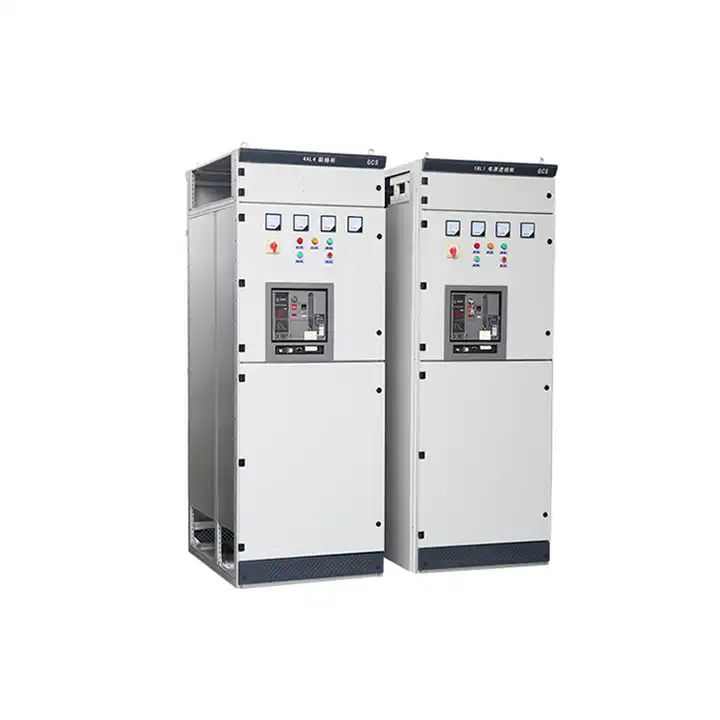Why is Low Voltage Switchgear Crucial for Modern Electrical Systems?
2025-01-08
When it comes to ensuring the safety, efficiency, and reliability of electrical systems, the importance of switchgear cannot be overstated. Among the various types of switchgear used in industrial and commercial applications, low voltage switchgear plays a vital role in managing and protecting electrical circuits. But why is low voltage switchgear so crucial for modern electrical systems? In this blog, we’ll delve into the significance of low voltage switchgear, how it works, and why it’s an essential component in today’s electrical infrastructure.
What is Low Voltage Switchgear?
Low voltage switchgear refers to electrical devices that are used to control, protect, and isolate electrical circuits operating at low voltage levels, typically below 1,000 volts. These devices are commonly used in a variety of applications, from residential and commercial buildings to industrial facilities and power stations.
Switchgear consists of a combination of switches, fuses, circuit breakers, and other protective devices that work together to manage the flow of electricity. The primary role of low voltage switchgear is to prevent overloads, short circuits, and other electrical faults that could potentially damage equipment or create hazardous conditions. In addition, it ensures the safe distribution of electricity across a system by allowing users to control power flow and isolate faulty circuits.
The Role of Low Voltage Switchgear in Electrical Systems
1. Protection Against Electrical Faults: One of the most important functions of low voltage switchgear is to protect electrical systems from faults, such as overloads and short circuits. Circuit breakers, a key component of switchgear, automatically disconnect power when they detect faults. This prevents damage to electrical equipment and reduces the risk of fires, shocks, or other hazards.
2. Safety for Personnel and Equipment: Low voltage switchgear plays a critical role in safeguarding both personnel and electrical equipment. By isolating circuits and disconnecting power when necessary, it prevents dangerous conditions from arising. This enhances the safety of workers who may need to service electrical systems, reducing the likelihood of electrocution or accidents. It also protects expensive equipment from damage caused by electrical issues.
3. Control of Electrical Distribution: Switchgear allows operators to control the distribution of electricity across a system. It enables the switching of circuits on and off, as well as the redistribution of power when necessary. This is particularly important in complex electrical networks, where it’s essential to direct power to specific areas or equipment while maintaining overall system stability.
4. Improved System Reliability: Low voltage switchgear is essential for maintaining the reliability of electrical systems. By isolating faulty circuits and preventing electrical issues from affecting the entire network, switchgear helps ensure that the rest of the system continues to function smoothly. This is especially crucial in industrial and commercial settings, where downtime can result in significant losses.
5. Energy Efficiency: Efficient energy distribution is another benefit of low voltage switchgear. By allowing operators to monitor and control electrical flows, it helps optimize energy consumption, reduce waste, and enhance the overall efficiency of a system. With the rising demand for energy-efficient solutions, low voltage switchgear plays a key role in supporting sustainable energy practices.
Types of Low Voltage Switchgear
Low voltage switchgear comes in various types, each designed for specific applications. Some of the most common types include:
- Circuit Breakers: These are automatic switches that disconnect a circuit when an overload or short circuit is detected. Circuit breakers are essential for preventing damage to electrical systems and ensuring the safety of the network.
- Disconnectors: Disconnectors are used to isolate electrical circuits for maintenance or repair purposes. They allow operators to safely work on a system by completely cutting off the power supply to specific sections.
- Fuses: Fuses are protective devices that interrupt the flow of electricity when a fault is detected. They work by melting a metal element inside the fuse when an overload occurs, effectively disconnecting the circuit.
- Switches: Manual or automatic switches are used to control the flow of electricity by opening or closing circuits. These devices are commonly used for switching power on and off in various parts of a system.
- Busbars: Busbars are conductive materials used to carry electricity within a switchgear unit. They are designed to handle high currents and distribute power to different circuits within an electrical system.
Why is Low Voltage Switchgear Important for Modern Infrastructure?
1. Growth in Demand for Electricity: As populations grow and industries become more reliant on electricity, the demand for safe and efficient electrical systems has increased. Low voltage switchgear plays a crucial role in managing this demand by ensuring that electrical circuits are well-protected and efficiently distributed.
2. Technological Advancements: With the increasing complexity of electrical systems and the rise of technologies such as automation and smart grids, the need for advanced switchgear solutions has grown. Modern low voltage switchgear incorporates features like remote monitoring, digital control, and advanced fault detection, making it an essential component of today’s smart electrical networks.
3. Regulatory Compliance: Electrical systems are subject to strict regulations to ensure safety and efficiency. Low voltage switchgear helps meet these standards by providing essential protection and control mechanisms. Compliance with these regulations is not only necessary for safety but also for avoiding penalties and ensuring the smooth operation of facilities.
4. Cost-Effectiveness: Investing in quality low voltage switchgear can lead to long-term savings by preventing costly electrical failures and reducing maintenance costs. The ability to isolate faults and improve system reliability ensures that businesses and industries can continue to operate without interruption.
Conclusion
Low voltage switchgear is a fundamental component in the safety and efficiency of electrical systems. By protecting circuits from faults, ensuring reliable power distribution, and enabling efficient control of electricity flow, low voltage switchgear helps to keep modern electrical systems running smoothly. Its role in industrial, commercial, and residential settings cannot be overstated, and with the ever-increasing demand for electricity and technological advancements, its importance will continue to grow.
Whether you're looking to upgrade your electrical infrastructure, ensure safety standards, or improve system performance, low voltage switchgear is an investment that pays off in both reliability and cost savings. With the right switchgear in place, you can rest assured that your electrical system will operate safely and efficiently for years to come.



